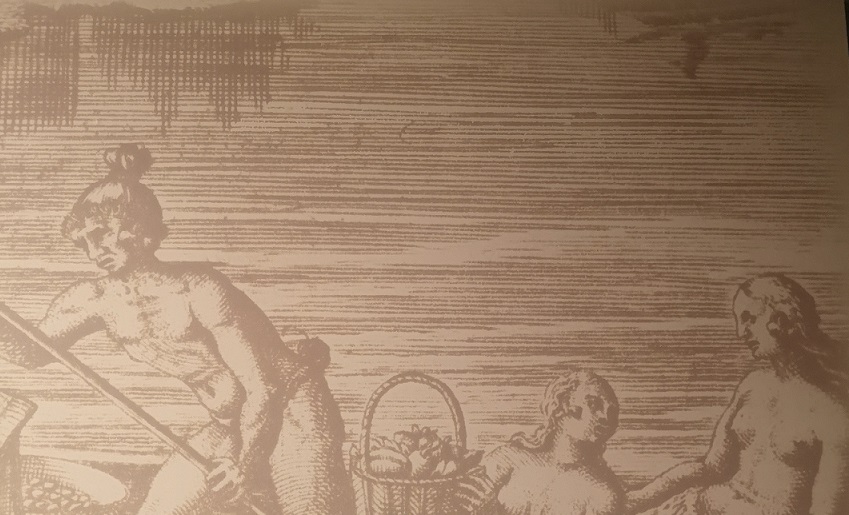Interesting information may also be found at the Miami History Museum.
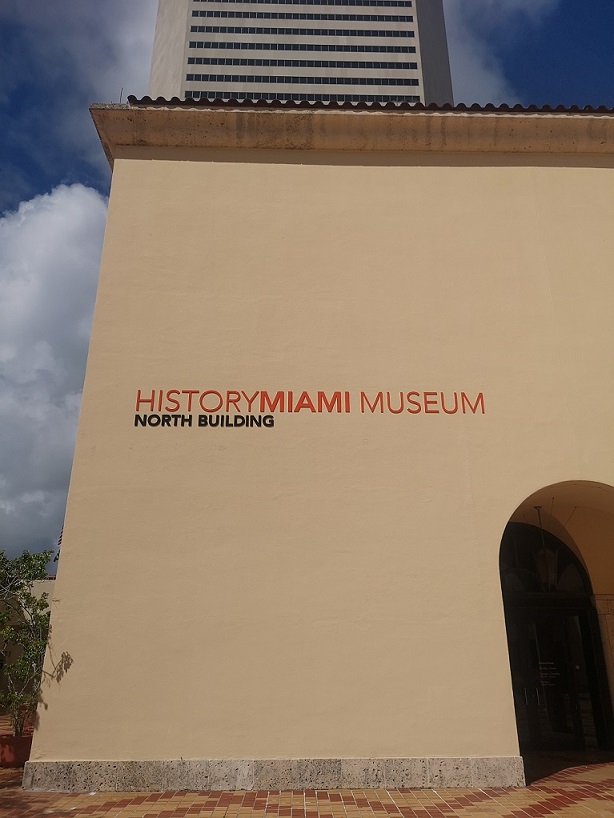
Among its exhibits, there is an image of a chief of the Seminole tribe. The author of this portrait is an American naturalist, William Bartram, who embarked on a journey around Southern territories from 1773 to 1777. He shared his observations and research in his book Travels in North and South Carolina, Georgia, East and West Florida*. This book contains the aforementioned portrait exhibited in the Miami museum.
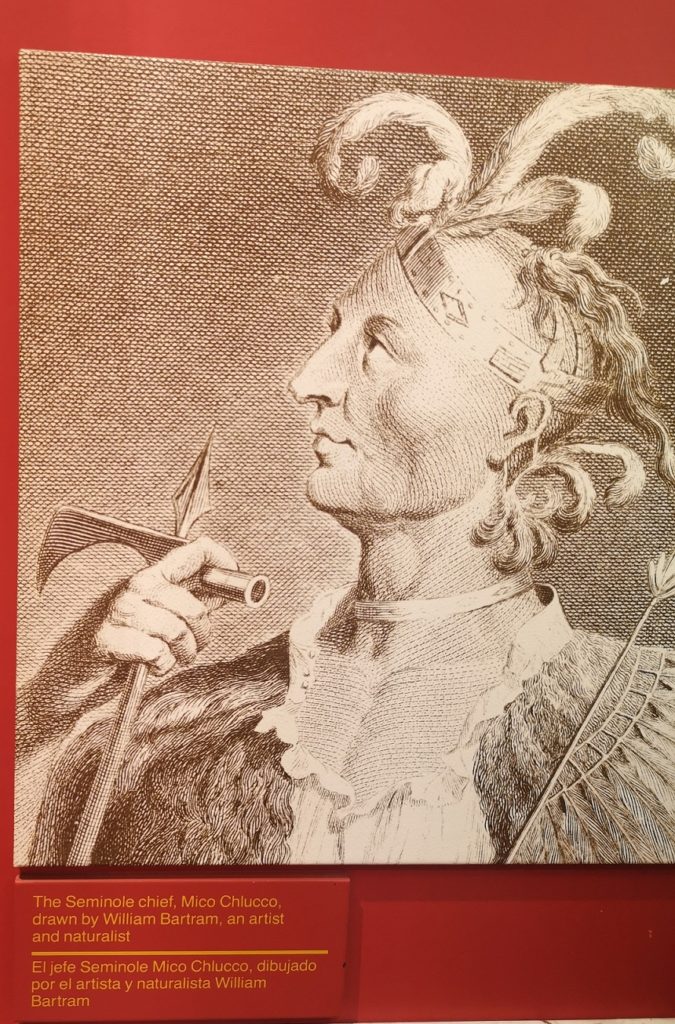
Bartram’s descriptions of the indigenous peoples living in the territories of the Carolinas, Georgia and Florida coincide in many respects with the information found in the travel narratives of other explorers. The author writes about Native American tribes as follows: “The males of the Cherokees, Muscogulges, Siminoles, Chicasaws, Chactaws and confederate tribes of the Creeks, are tall, erect, and moderately robust, their limbs well shaped, so as generally to form a perfect human figure… The men shave their head, leaving only a narrow crest or comb, beginning at the crown of the head”.
The author pays special attention to the tall stature of the Muscogulges men: “The men are of gigantic stature, a full size larger than Europeans; many of them above six feet (French measure = 1.92 meters), and few under that”.
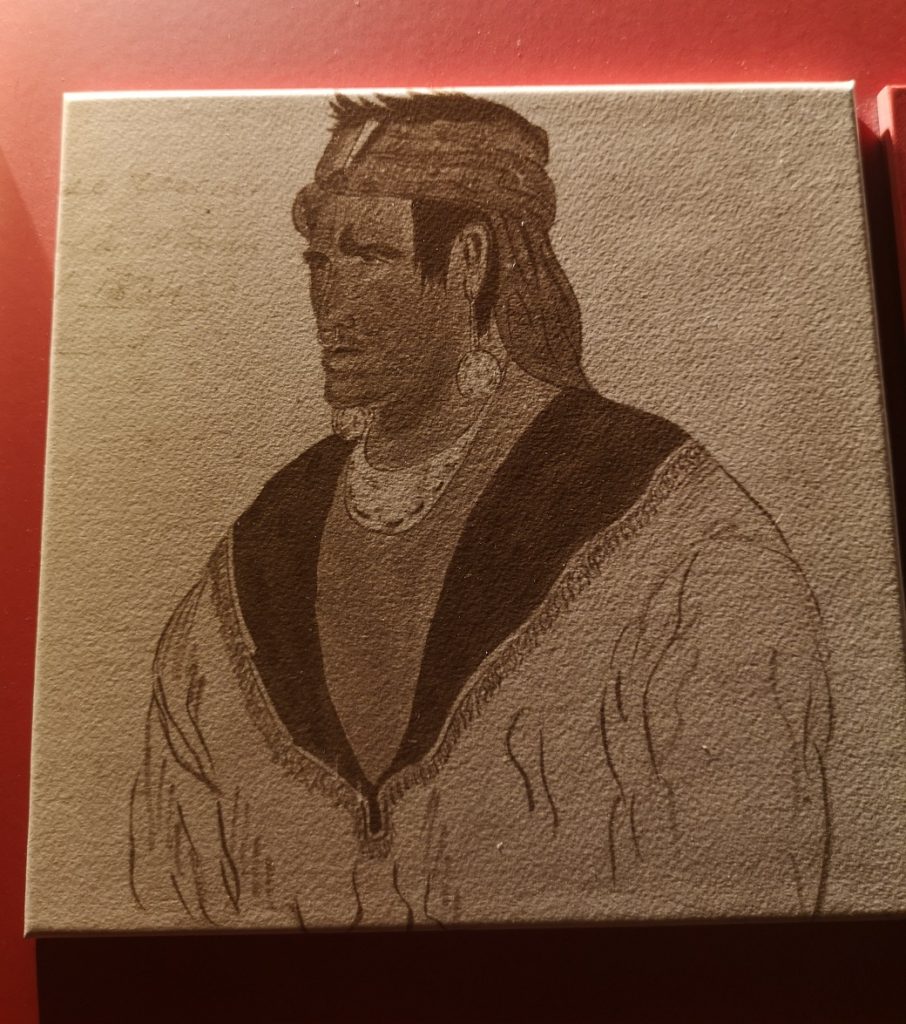
Bertram describes the indigenous women as follows: “The women of the Cherokees are tall, slender, erect and of a delicate frame, their features formed with perfect symmetry. Some of their young women are nearly as fair and blooming as European women”. The images of Native American women exhibited in the Miami History Museum are fully consistent with Bartram’s descriptions.
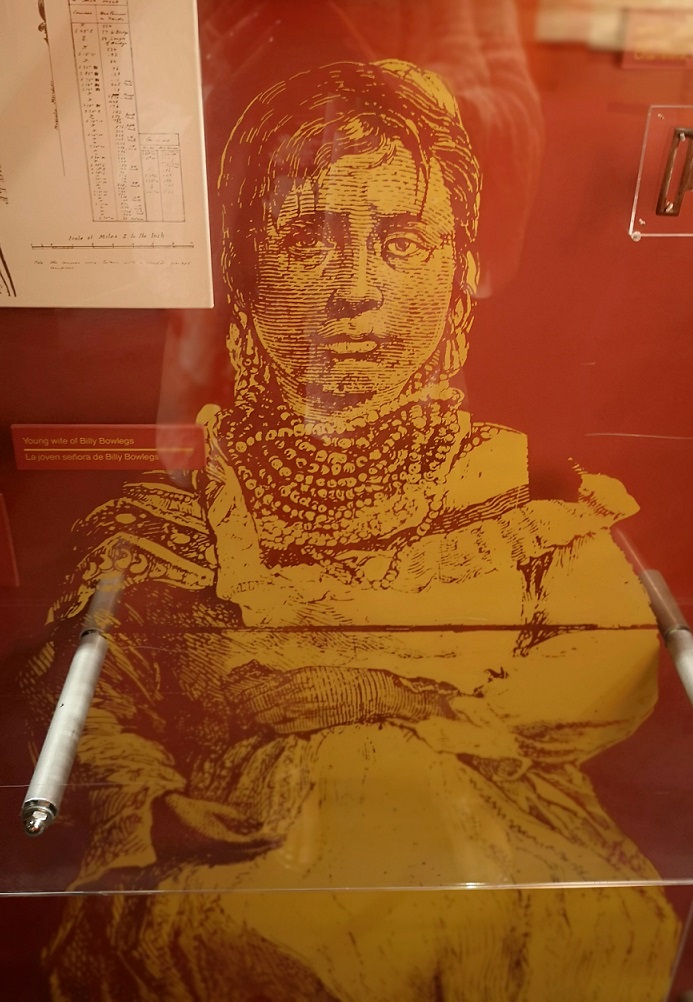
Other explorers also presented images of the Seminoles. It is interesting to examine a drawing of one of the most famous chiefs, Osceola, taken from a book by George Catlin**, an American painter and author who traveled to many places of residence of the North American natives from 1831 to 1837.
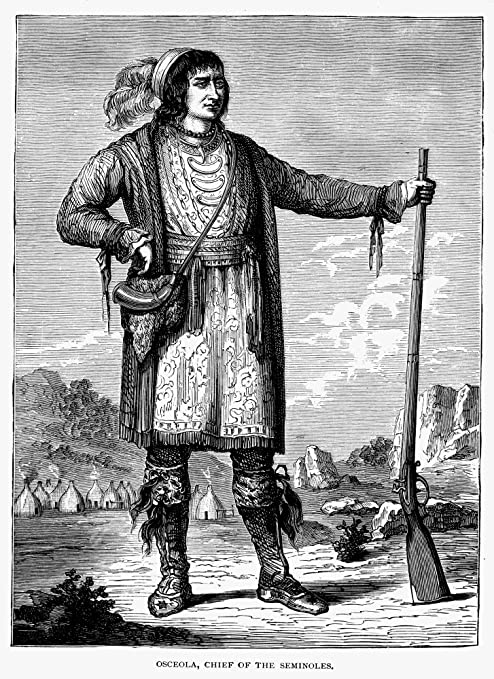
North American museums also have a large number of photographs of later periods, which are of great interest. We will return to this topic later.
____________________
*William Bartram, Travels through North and South Carolina, Georgia, East and West Florida, the Cherokee country, the extensive territories of the Muscogulges, or Creek confederacy, and the country of the Chactaws (1791)
**George Catlin, Letters and Notes on the Manners, Customs, and Condition of the North American Indian (1841) vol. II, p. 8-9
